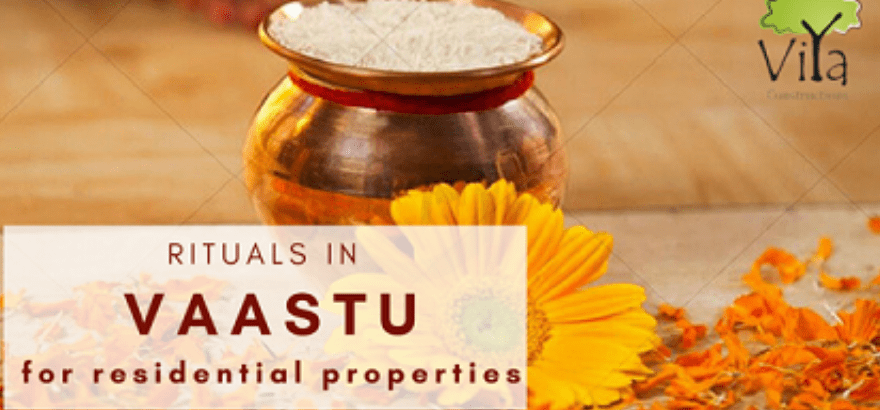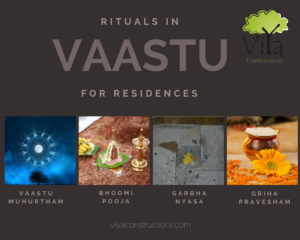Rituals are essentially celebrations with other forms of nature to gather life energy, for any individual. It is especially noteworthy as it links the individual to collective consciousness through natural vibrations. Rituals in Vaastu Shastra pertains to the relationship of an individual to the earth (bhoomi), or with the energies (Vaastu Devata) or to the trees (Vana Mahotsavam, Vana Muhurtam). Vaastu Shastra recommends the right time and process to carry out any new endeavour, including building a new home.
Rituals in Vaastu for Homes
Let’s therefore look at some of the most commonly followed rituals in Vaastu for homes.
-
Vaastu Muhurtam
The exact time to commence the construction operations and invoke the energies at site is calculated as Vaastu Muhurtham.
The life energy of a site (represented as Vaastu Purusha) is active for 8 months in a year and dormant for the remaining 4 months. Vaastu Muhurtham, chosen using the Indian Calendar Panchangam, is the right time when the energies are awake and powerfully participate in the ceremony.
-
Bhoomi Pooja
Bhoomi Pooja is done to offer prayers to get blessings from the Lords of different energies at the site. It is usually carried out at the same time as Vaastu Muhurtam (preferably in the morning).
The Bhoomi Pooja ritual includes marking a 64 part diagram on the north-eastern part of the property. It is usually done using natural seeds and colouring substances.
Prayers are offered to the Lords of each part (or mandala) along with chants and offerings. A sample pit is dug out in the north-eastern part and first bricks or stones are laid out there, marking the start of construction. A model of Vaastu Purusha made out of straw is burnt to avert evil energies.
-
Garbhanyasa
Garbha means womb and Garbhanyasa is the life defining ritual. This ritual is carried out once the construction is completed and building is ready for occupation. It is carried out to bring alive the building and its spaces. Evening or night is the most preferred time.
The Garbhanyasa ritual involves:
- Firstly, choosing a specific location to dig out a pit or cavity. The process can be carried out in the centre of the property or Brahmasthana or in the north, west, east, south on one side of the central axis.
- Next is filling the bottom of the cavity with earth from different places.
- Placing the first bricks or stones above that.
- Placing a box made of silver or gold with nine (peetha padam) or twenty-five (upapeetha padam) compartments in the cavity. Offerings to Gods of all directions are kept in the respective slots in the box. Along with that, nine gems, nine grains, minerals and herbs are also placed in the box. The box is then covered with a wooden lid.
- Finally, filling up the cavity amidst chanting and prayers.
The box represents the source of life and movement. By placing it with offerings to the energies, the building comes alive.
-
Griha Pravesham
The most commonly followed ritual in Vaastu for homes or residences is the Griha Pravesham. Griha Pravesham is the final action of making residences ready for occupation. The residents worship planets and devas and invoke Lord Ganesha. In addition, the space is sprinkled with holy water and sanctified with the sacred Vedic ritual. After which the house is ready to be occupied and inhabitants can start their new lives.




